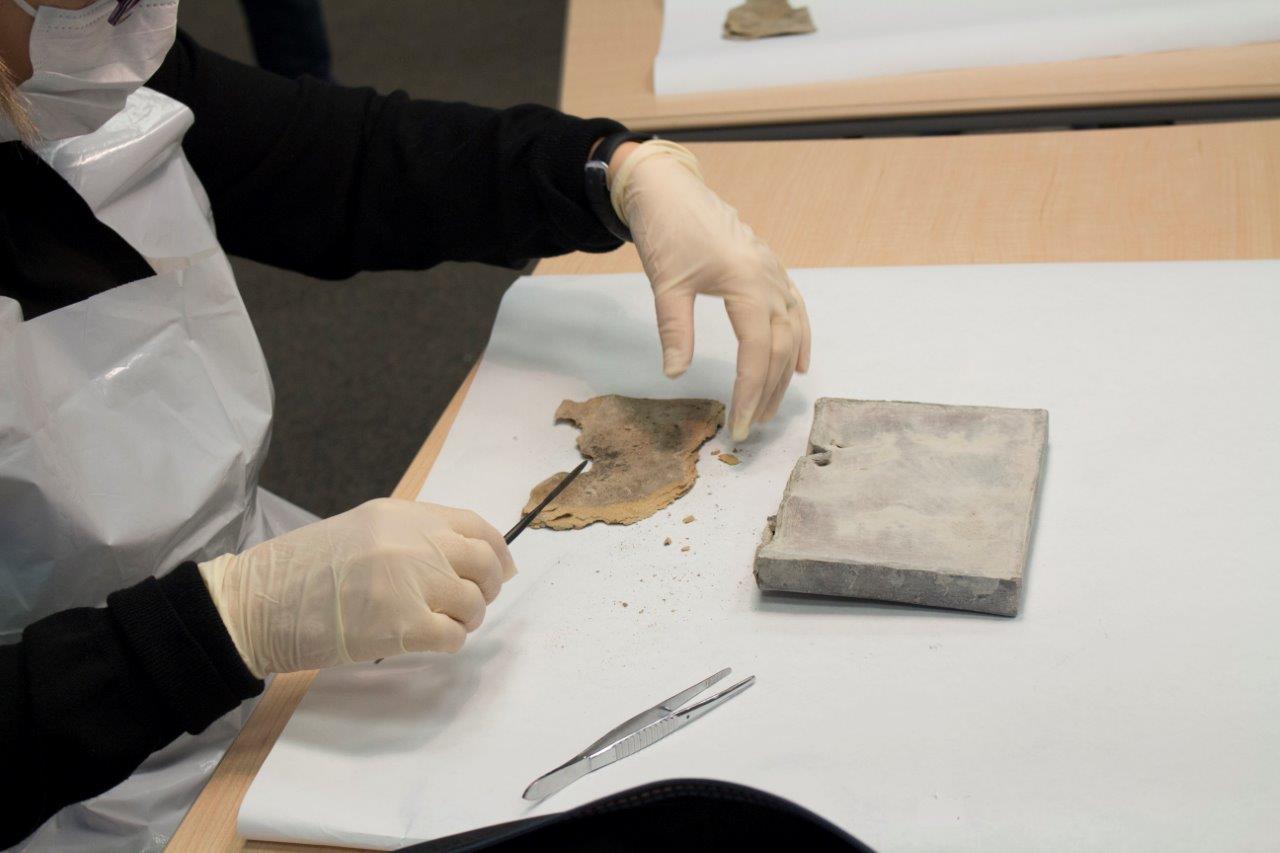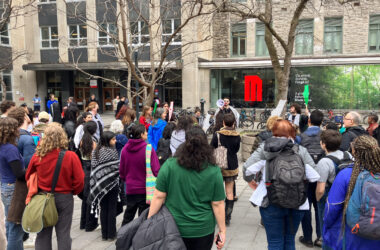The Roddick Gates are currently under construction for maintenance and for a more welcoming design. On March 1, construction workers discovered a time capsule while lifting stones from the arches of the North-East side of the entrance. The finding was brought to McGill Archivist Lori Podolsky, who organized the reveal of the capsule on March 9.
Conservator Chantal Emond was tasked with opening the parcel. Emond has previously worked with McGill’s Archives as well as with the Osler Medical Library.
“It’s exciting to be at the centre of it all, but as a conservator […] I try to stay neutral to do the work,” Emond said.
Most of the contents were too damaged to identify, but Emond was able to uncover newspaper clippings of a French advertisement. The papers, over 90 years old, were clumped together because of mold formations. When assembled, the clippings appeared to be an apartment listing.
“The capsule is dated at the latest to 1925, the year of the Roddick Gates’ commemoration,” Podolsky said.
The capsule itself, composed of lead, measured exactly seven inches by five inches and is three-quarters of an inch deep. It was found beneath one of the stones being moved during the renovations.
“[The capsule] was damaged prior to when it was found,” Podolsky said. “The damage is old, so perhaps someone had gone back to the Eastern Roddick gate and caused it. However, there is no indication that those pieces were ever removed, so we suspect that the capsule was placed there already damaged.”
Although it is unlikely that the identity of the individual who placed the time capsule will be determined from its contents, the fact that the stone in which it was placed was chiseled and scored is significant. Podolsky estimates that the capsule was very likely laid during the original construction.
“There had to have been foresight when they laid the time capsule because it filled the stone perfectly,” she said.
The Roddick Gates were commissioned by Lady Amy Redpath Roddick in 1924 for $50,000. Lady Roddick was heavily involved in selecting the architect, Grattan D. Thompson, and finalizing design plans. Her correspondences with Thompson and others involved are preserved in the McGill University Archives. However, none of these documents make any mention of time capsules.
“Sometimes time capsules are done formally where the owners place it, sometimes they are done informally by the people building it,” said Gwendolyn Owens, director and senior advisor of the Visual Arts Collection at McGill. “Time capsules have happened in many places. Very often, when things were built, […] somewhere in the walls, masons would place in a box what was important to them at that point.”
This artifact is the second time capsule found on campus. The first one was discovered in 2003, as reported by The McGill Reporter.
“We suspect there are tons of capsules around campuses, especially around cornerstones and near monuments,” Podolsky said.
Emond and Podolsky will continue investigating the origins of the capsule. Emond will further examine the capsule in her lab, checking for inscriptions, markings, and any indications of where it came from. She hopes to uncover a clearer time date.
“The newspaper clippings give us some context,” Podolsky noted, “It’s a French [language] newspaper, [the Journal de Montréal], which has importance and significance.”
Podolsky is researching newspaper archives from the time period for any public announcements regarding a time capsule.
“Our plans are to look at the [Montreal] Gazette and the [Montreal] Star to see if anything was recorded there,” Podolsky revealed. “For now, it’s a really neat mystery.”
A condition report will then be created for the time capsule and the piece will be accessioned.
“It will go into our archives as an artifact and will become a record of McGill,” Podolsky said.









